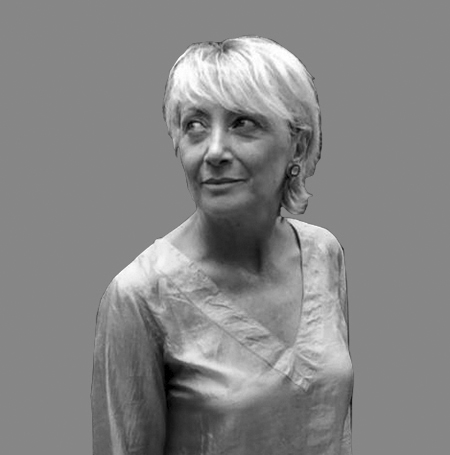
Cosimo Vinci, prima ancora di un designer, è un narratore
Ma le sue storie non si leggono, si indossano
C’è chi disegna oggetti. E poi c’è chi scrive identità. Per Cosimo Vinci il design non è un mestiere, è una lingua fatta di materia, luce, memoria. C’è sempre stato un Mediterraneo interiore a guidarlo – non quello delle cartoline, ma un mare arcaico, saturo di mito e stupore, che si insinua nei dettagli di un gioiello come nel concept di un’intera collezione o nel logo di un brand.

Quando una delle sue corone in oro è comparsa sulla testa di Madonna, per uno shooting su Harper’s Bazaar, non era solo l’eco glamour di un oggetto di design. Era un cerchio che si chiudeva: un simbolo nato nel Sud, nella Magna Grecia, approdato all’icona del pop globale. Un ponte fra uno ieri remoto e un presente elettrico. “Volevo liberare la corona dal suo passato autoritario“»”, racconta. E ci è riuscito. Le sue ghirlande non dominano, accarezzano. Non impongono, evocano. Sono amuleti di eleganza e introspezione.

Ma Cosimo Vinci (Art Director & Luxury Brand Designer) non si lascia definire da un solo campo. Il suo lavoro si muove tra lo stile e il senso. È uno scultore dell’immaginario. Con il suo studio, fondato nel 2000 a Vicenza – cuore dell’alta gioielleria italiana – accompagna brand, aziende, idee.
Costruisce identità con una lente estetica, ma anche con una poetica strategica. Naming, moodboard, storytelling, esperienze immersive: tutto diventa racconto. Tutto è messinscena. È stato Elio Fiorucci, un giorno, a mostrargli che la moda poteva essere un linguaggio democratico. Che l’effimero, se ben orchestrato, può toccare l’anima. “Con Elio ho imparato a riconoscermi”, dice. E in effetti, da lì in poi, il suo percorso ha preso direzioni inaspettate, sempre guidate da un’intuizione precisa: il design non è ciò che si vede, ma ciò che resta.

Anche Versace è stato un territorio fertile. Lavorare accanto a Donatella, disegnando gioielli e orologi per la Maison, è stato come entrare nel tempio dorato del barocco contemporaneo. “Il mio retroterra ha trovato risonanza con lo spirito teatrale e sacrale di Gianni Versace”, racconta. Da quell’universo ha imparato a fondere opposti: forza e delicatezza, sensualità e rigore, materia e pensiero.
La teoria? Certo, c’è. Il DAMS di Bologna, gli anni ’90, Umberto Eco e Renato Barilli docenti. Ma è il talento che ha guidato la mano. Vinci si è sempre mosso su quel crinale dove il design incontra l’arte, il costume, la moda, la storia, il pop. Senza confini e senza tempo. Sua è la “V Prisma Collection“.
E mentre il mondo cambiava, la sua poetica si consolidava. Come nella mostra Tesori della Magna Grecia (MARTA, Taranto, 2011), dove le corone tornavano a essere simboli personali, quasi meditativi. Oppure nei suoi corsi e laboratori, in cui forma e pensiero si intrecciano per ispirare una nuova generazione di designer, per creare possibilità. E non progetta solo prodotti, ma universi.
La sua metodologia è un gioco d’equilibrio: tra estetica e mercato, intuizione e strategia. Ogni creazione è un mondo compatto, coerente, seducente. “Un prodotto senza una storia è solo una forma vuota”, tiene a precisare. E così, dalla boutique al visual, dallo stand fieristico al layout di un catalogo, ogni cosa diventa un racconto sensoriale.
Oggi guarda avanti, tra nuove sfide e nuovi linguaggi. L’unico punto fermo è la curiosità. Quella non si negozia.
Cosimo Vinci is a storyteller first and foremost, even before being a designer.
But his stories are not read, they are worn.
There are those who design objects. And then there are those who write identities. For Cosimo Vinci, design is not a profession, it is a language made of matter, light, and memory. He has always been guided by an inner Mediterranean—not the one found on postcards, but an archaic sea, saturated with myth and wonder, which creeps into the details of a piece of jewelry, the concept of an entire collection, or a brand logo. When one of his gold crowns appeared on Madonna’s head for a Harper’s Bazaar shoot, it was not just the glamorous echo of a design object. It was a circle closing: a symbol born in the South, in Magna Graecia, which had become a global pop icon. A bridge between a distant past and an electric present. “I wanted to free the crown from its authoritarian past,” he says. And he succeeded. His garlands do not dominate, they caress. They do not impose, they evoke. They are amulets of elegance and introspection.
But Cosimo Vinci (Art Director & Luxury Brand Designer) cannot be defined by a single field. His work moves between style and meaning. He is a sculptor of the imagination. With his studio, founded in 2000 in Vicenza—the heart of Italian high jewelry—he accompanies brands, companies, and ideas. He builds identities with an aesthetic lens, but also with strategic poetics. Naming, mood boards, storytelling, immersive experiences: everything becomes a narrative. Everything is staged. It was Elio Fiorucci who showed him one day that fashion could be a democratic language. That the ephemeral, if well orchestrated, can touch the soul. “With Elio, I learned to recognize myself,” he says. And indeed, from then on, his career took unexpected directions, always guided by a precise intuition: design is not what you see, but what remains.
Versace was also fertile ground. Working alongside Donatella, designing jewelry and watches for the fashion house, was like entering the golden temple of contemporary baroque. “My background resonated with the theatrical and sacred spirit of Gianni Versace,” he says. From that universe, he learned to blend opposites: strength and delicacy, sensuality and rigor, matter and thought.
The theory? Of course, there is one. The DAMS in Bologna, the 1990s, Umberto Eco and Renato Barilli as teachers. But it was talent that guided his hand. Vinci has always moved on that ridge where design meets art, costume, fashion, history, pop. Without boundaries and without time.
And as the world changed, his poetics consolidated. As in the exhibition Tesori della Magna Grecia (MARTA, Taranto, 2011), where crowns returned to being personal, almost meditative symbols. Or in his courses and workshops, where form and thought intertwine to inspire a new generation of designers, to create possibilities. And he doesn’t just design products, he designs universes.
His methodology is a balancing act: between aesthetics and the market, intuition and strategy. Each creation is a compact, coherent, seductive world. “A product without a story is just an empty form,” he is keen to point out. And so, from the boutique to the visuals, from the exhibition stand to the layout of a catalog, everything becomes a sensory narrative.














POST COMMENT
Devi essere connesso per inviare un commento.